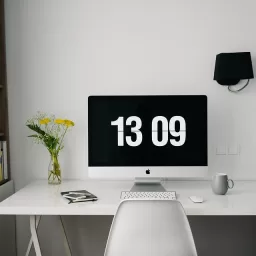
10 Tips on Shopping for CCTV Cameras
If you are in the market for a CCTV package for your home or SME, you are definitely making the right choice. CCTV cameras offer security and peace of mind. When burglars or miscreants target homes or businesses, CCTV video footage can help identify the crime and criminals instantly. Surveillance studies conducted in cities, especially crime prone regions, suggest that installing CCTV cameras act as a crime deterrent, and media reports suggest a marked decrease in the number of crime cases reported from areas where CCTV cameras are operational.
Once you have made the decision to purchase and install CCTV cameras, the next step is shopping for the best fit. With so many options available, how do you decide what works best for you? Price can be one deciding factor. Many websites offer new economical CCTV camera packages, starting as low as USD $599. With price points for every budget, buying a CCTV package does not need to be an expensive ordeal. A first time buyer will encounter countless options: What kind of camera resolution or viewing resolution is best? What are the best viewing frame rates? Do I need night vision? How much video recording capacity and video storage capacity will I require?
In this article, we break down these terms for you and help you decide the best CCTV package for your needs:
1. CCTV camera resolution
Most tech savvy users wield phone cameras and video camcorders and discuss megapixels and camera resolutions like a pro. However, when researching CCTV camera packages, you may come across the term TVL or TV lines. What are these? Well, most CCTV cameras operate on the analog camera or analog television system. Therefore, instead of pixels, we talk in terms of TV lines. We understand that higher the pixels, better the image quality we receive. Similarly, the more the TV lines (subject to size of lens, light, and so on), you will receive better picture quality on your CCTV camera. For most home and business security purposes, camera resolutions may range from 420 to 700 TV lines. In fact, 700 TV lines is the maximum you may find. Once you enter the digital CCTV field, you may find pricier options with much higher resolution cameras.
2. Internet viewing resolution
Internet viewing resolution uses CIF (Common Intermediate Format) as a measurement unit. It defines a video sequence with a resolution such as 352 X 288 that maybe converted for viewing in PAL or NTSC formats. Confused? Let us try that again. Your camera captures an image at a certain rate called frames per second. The CIF resolution refers to how your DVR records this image or sequence of images. In a nascent hard drive or hard disk industry, storage was expensive. Naturally, people preferred to compromise and capture low-resolution images by sacrificing 4 CIF and maximum frame rate. With video storage turning cost efficient, you can now capture images on 4 CIF and get maximum detail. As the name suggests, 4CIF offers almost 4 times the size of the image and is especially beneficial in places such as front desks, doorways, bank operations, and so on, for facial recognition and clarity in images. In other areas, where you prefer fluid action and no lapse in capture of movements, you may resort to CIF while recording.
3. Internet viewing frame rate
We talked about frame rate (frames per second) in terms of captured video footage and its quality. The concept remains the same no matter what kind of video capturing device you may use. The device actually captures snapshots and replays them back in quick succession making it look like a fluid movement or action. Generally, in CCTV camera package terms, anything above 30 fps would provide a smooth footage without any jerks. Many places now offer exceptional deals on even 120 fps CCTV camera packages making it as ‘real time’ as it can get.
4. All weather CCTV cameras
While shopping for a CCTV package, you may want to consider the placement of cameras. Depending on if you want cameras mounted outdoors or indoors, you may choose from a wide variety of waterproof cameras. Waterproof cameras are better able to withstand damage caused due to rain, snow, and humidity. Some weatherproof cameras may come with a sealed glass enclosure to protect it from environmental damages. Another advantage of sealed weatherproof cameras includes protection from dirt or dust, floating debris, and humidity, even in enclosed spaces such as large warehouses, storage facilities, and inside factories, auto repair shops, and so on.
5. Day and night recording
Whether you are considering an investment in CCTV cameras for your home or business, you may want to look at cameras that offer night vision and 24-hour day and night recording. Break-ins, thefts, and vandalizing property happen often in the nighttime, and poor visibility is the number one reason criminals go free. Night vision and infrared cameras capture quality image despite dark surroundings. They provide better definition of objects, people, or animals, and make recognition and identification easy. Area of focus, angle of installation, lens size, and pan tilt zoom (PTZ) features may determine the efficiency of night vision CCTV cameras. Installation of infrared cameras may also require set up at night using infrared lighting or simulate nighttime conditions. If you are considering 24/7 recording, it is also important to look at DVRs with max storage and back up accordingly.
6. Online viewing
Many security and surveillance companies offer client-centric features that go beyond installation and maintenance. One such feature includes registering a domain name with your security company and having them set up a personalized website to view your property anytime anywhere through a PC, tablet, or your web-enabled cell phone. Just type in your specific URL, and you will be linked to your CCTV protected property, home or business instantly and in real time. This is especially great if you want to keep an eye on your business while you travel or watch out for your children, pets, or even the elderly while you are at work.
7. Tracking via smart phones
With smart phones stepping up to meet the personal computer challenge, it is not surprising that security companies now offer wireless tracking through your web-enabled smart phones. Creating a domain name with a specific URL allows you to personalize the security viewing system on your smart phone. You do not have to download any external apps or software for this purpose. The security system companies selling you these CCTV packages may offer these features for a nominal price.
8. Video compression
An important aspect of CCTV installation includes compressing large video data into a format that can be easily stored or transmitted. Compressed data needs to undergo through the reverse process for viewing. Standardizing this process allows various different devices to inter operate with each other efficiently. In the CCTV industry, the gold standard is H.264 compression used by various different HD and Blu-Ray disc players, streaming video formats, and other Internet applications. CCTV cameras using H.264 video compression ensures the absolute best quality of video footage transmission.
9. Alert systems: Message or email, motion detection
CCTV cameras allow you to capture images as they happen or an additional feature called motion detection maybe added or purchased with your CCTV cameras. In the latter case, only movement in front of the camera prompts image capture and recording. Motion detection comes handy if you prefer to use less disk space for recording. In a designated quiet area, sudden movements maybe recorded making it easy to store minimum data and review it later. Many motion detector cameras maybe pre installed with an alarm or sound system that maybe triggered by movement. Some surveillance companies may also provide an email alert system that warns you of intrusion or movement in a monitored area.
10. Recording and storing
Any CCTV package is incomplete without a reliable DVR system that can record and store your data for future reference. Online recording and viewing allows you to look at your monitored area on a specially designated domain. Remote monitoring is possible on your computer as well as your smart phone. Offline recording and storing requires hard disk space, which can maybe purchased according to your needs. Some hard disks range from 500 GB all the way to 2 TB and may allow you to store your video data for up to 12 months.
registering domain names
#Tips #Shopping #CCTV #Cameras
Will be pleased to have you visit my pages on social networking .
Facebook page here.
Twitter account is here.
Linkedin account here
Post byBedewy for info askme VISIT GAHZLY



